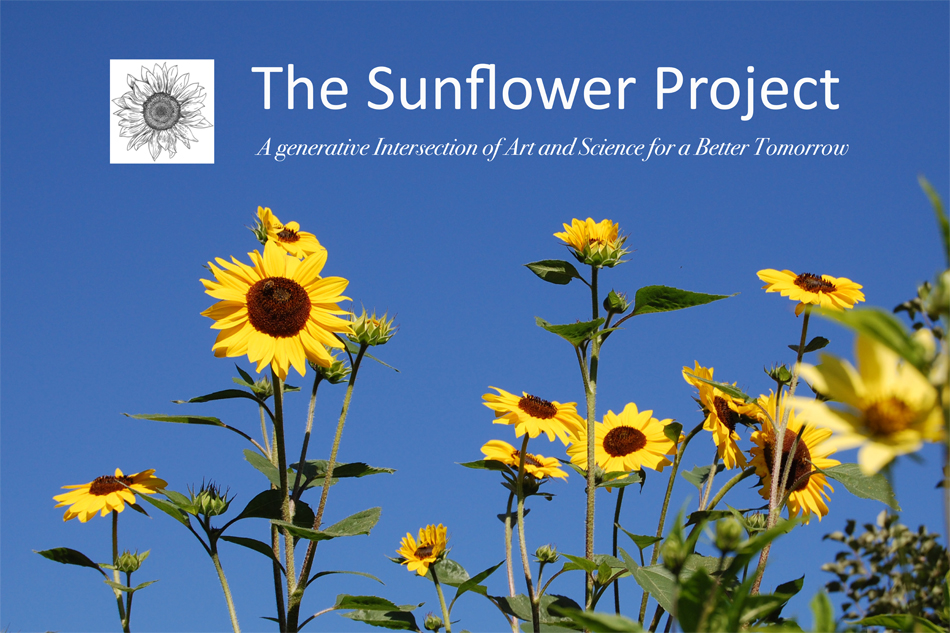Healing Hartford Land-Veeder Place
We'll be working with neighborhood organizations, to design and plant a remediation garden and forest to clean up legacy industrial contamination on the old Veeder-Root factory site.
Leader
Susan Hackett
Location
21-28 Sargent Street Hartford, CT 06105
About the project
Like so many other parts of the northeast, Hartford is home to a number of now defunct factories like the Veeder-Root site on Sargent Street. Sitting in a residential neighborhood, the site has undergone an engineered environmental remediation. While the soil is cleaner, it is not clean. It’s still contaminated with a with VOCs (volatile organic compounds), heavy metals, and petroleum residue. These chemicals filter through the soil and once they reach the groundwater and are moved slowly, and inexorably to the Connecticut River, a little over a mile to the east. Once in the river, they are carried to the Long Island Sound.
“The Sunflower Project”, working with data provided by the Ct Department of Energy and Environmental Protection, and the students of 'Our Piece of the Pie', will design a site-specific phyto-remediation garden and forest on the Veeder-Root site. We will work with the high school students of ‘Our Piece of the Pie’ located in the Veeder-Root building, teaching them the history, theory and practice of using plants to clean up environmental problems simply, safely, and effectively with both classroom and hands-on site work. In addition, we’ll be working with the artisans of the on-site woodworking workshop, ‘FreshStart’, who will be commissioned to build beautiful arbor and benches for local people to enjoy.
Along Sargent Street, the grassy area by the sidewalk, will be electro-etched copper plates on wooden plinths built by the woodshop student-artists of “Our Piece of the Pie”. The video/recording student-artists will be creating a video production of the manufacturing history and the remediation work on the site. This video will be shared with the Asylum Hill/Clay Arsenal neighbors, the artisans of “Fresh Start”, and the families of the OPP students during a public block party to celebrate the neighborhood, the garden and achievement of the OPP students. The party will feature food from local restaurants and music from a local band.
The project at Veeder place will serve as a site of education about the condition of post-industrial land that many people are unaware of, while providing a generative intersection of environment, art, and community for many years to come.
The Steps
January 2020—Classes start at “Our Piece of the Pie” on the history and science of phyto-remediation.
Meet with neighborhood middle school science teacher to engage younger students. Schedule classes there if that teacher feels it is appropriate.
February 2020-Begin writing text and designing imagery with the OPP students for electro-etched copper to go street-side to engage pedestrians in the project
Commission ‘Fresh Start’ and begin working with their artisans to design/build arbor and benches for garden installation
Meet with neighborhood groups about Veeder Root site project, phyto-remediation and legacy contaminants.
Middle school classes begin;
March 2020-Design plinths and start building them with students in OPP woodshop; Begin working with OPP video students to script video about the site. Meet with neighborhood groups about Veeder Root site project, phyto-remediation and legacy contaminants.
Finish text and images for copper plates; Finish design for arbor/seating; Start building.
April 2020-Finish plinths; etch copper designs assemble and install.
Schedule first planting day for late April. Begin growing annuals in seed pots for transplant in May. Continue work on video.
May 2020-Schedule second planting day for mid-May. Finish work (paint stain) on arbor and furniture.
Continue working with OPP students on video. Schedule neighborhood party and begin facilitating students and neighborhood participants to identify local musicians, restaurants/caterers.
June 2020-Early June-Third planting day; install plinths; install arbor and furniture.
Mid-June-Have a party to celebrate and honor the students and artisans who made it happen!
Why we‘re doing it
Today in the news it was reported that 95% of baby foods tested contain toxic metals. That is disturbing and shocking, but sadly, not surprising. The soil that supports us on this planet, that allows the agriculture to feed us, is more contaminated than many realize. That contamination is often the result of manufacturing and industry that pre-dates our awareness of the potential harm being done. The goal of the 'Sunflower Project' is to address this legacy contamination, using beautiful and effective phyto-remediation - site by site, community by community, while using the site as an example in both classroom and hand-on learning for both the high school students of "Our Piece of the Pie" as well as the neighbors living in the affected area.
In addition to containing heavy metal contamination, the Veeder-Root site is still contaminated with trichloroethylene, a chlorinated solvent used on many manufacturing sites and a known carcinogen. Its presence in the soil allows this toxin to leach into the groundwater moving toward the nearby Connecticut River. We will position our remediation garden/forest to intercept this flow with plants capable of acting as solar powered pumps to reach these chemicals and process and volatize them harmlessly, while creating a beautiful neighborhood space.

